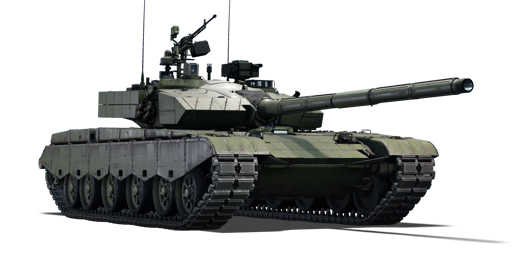The ZTZ99-II (ZTZ99式主战坦克 二类定型状态, aka 99一期改; industry code WZ123) is the accepted variant of the ZTZ99 in PLAGF service since the early 2000s. The need for a new MBT arose after Project 122, which proved inadequate against potential Soviet assaults on mainland China. A project for a new tank was initiated in April 1984. Development during the 1980s involved evaluations of the Object 172M-1 E-4 (known as the T-72 Ural or Type 64 六四型 by Chinese engineers) and later mock-up targets of the T-80U. Standards were revised throughout development, and the new third-generation MBT was extensively tested during the 1990s. Finalized prototypes/Limited Rate Production (LRIP) models (ZTZ99-I) were first displayed at the 50th National Day Parade. These LRIP tanks, which had yet to be mass-produced, later received upgraded protection packages in 2004, incorporating FY-4 ERA on both the UFP and turret, resulting in the familiar appearance of the ZTZ99.
The ZTZ99-II was introduced in Update "Hot Tracks". Adopting a NATO approach for their tank design, China incorporated arrow-shaped turret applique armour while retaining kinetic ERA protection inspired by Soviet MBTs. Engineers integrated the mobility characteristics of the former and the firepower of the latter (in fact exceeding most Russian/Soviet tanks thanks to the ZTZ99's FCS). Despite design flaws including the driver's hatch, mantlet, LFP, and its elongated hull, the superior handling compared to Soviet tanks will allow players to appreciate the overall performance of the ZTZ99-II. However, maintaining extra caution is advisable for optimal efficiency.















